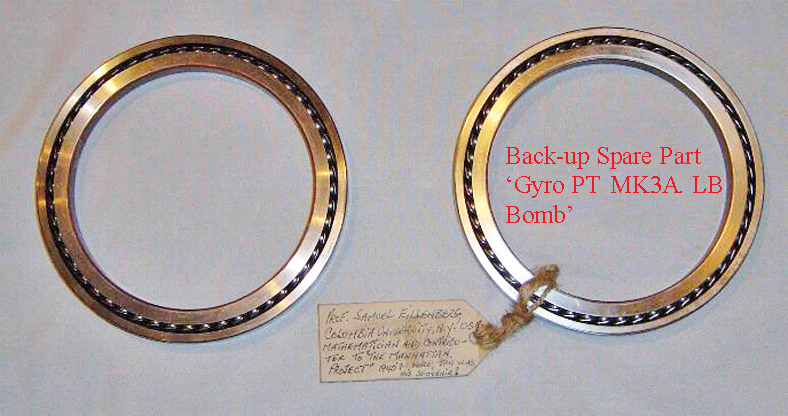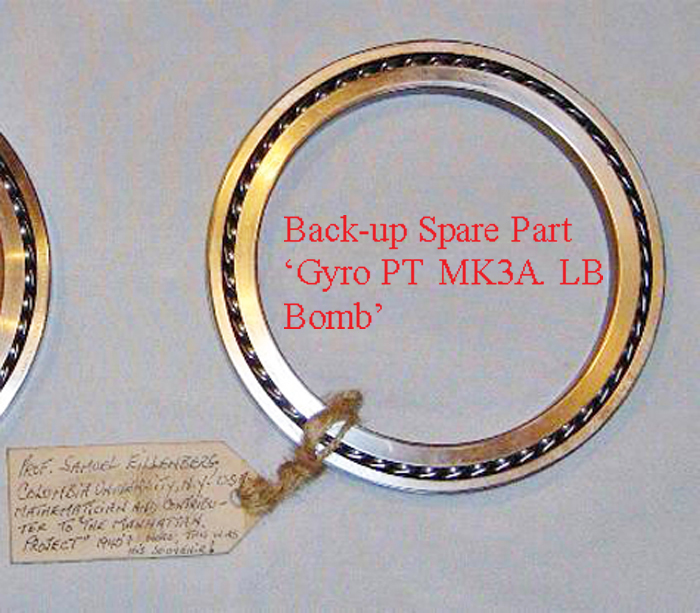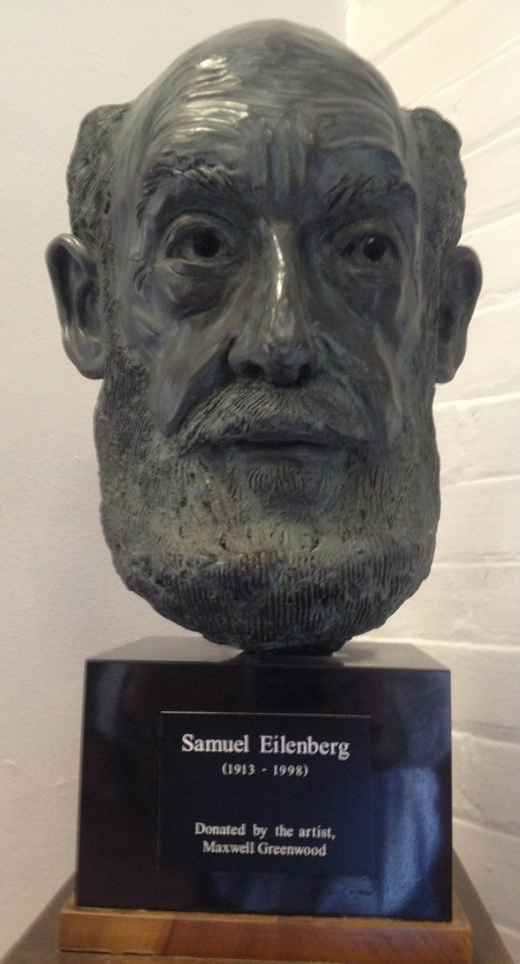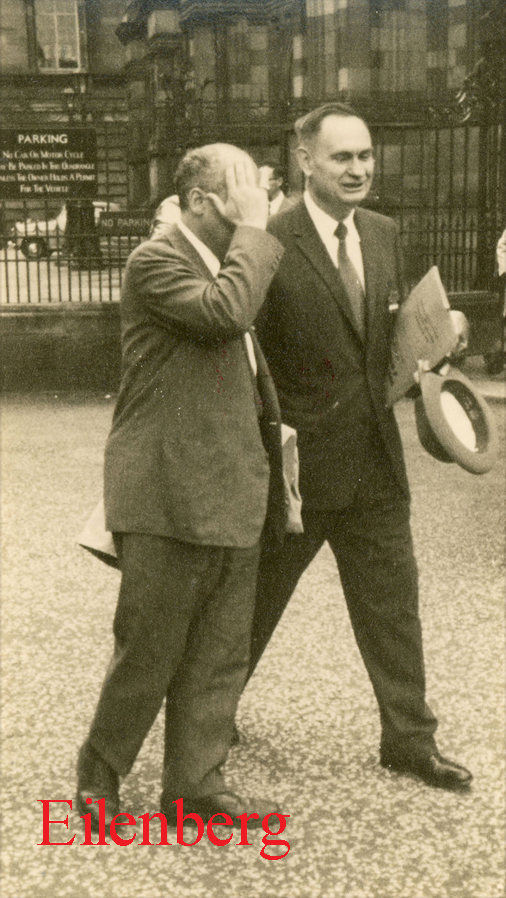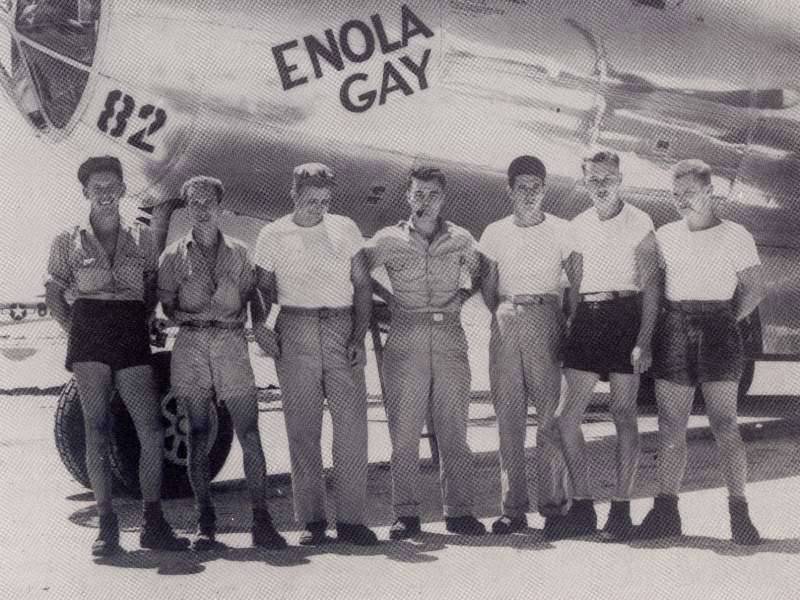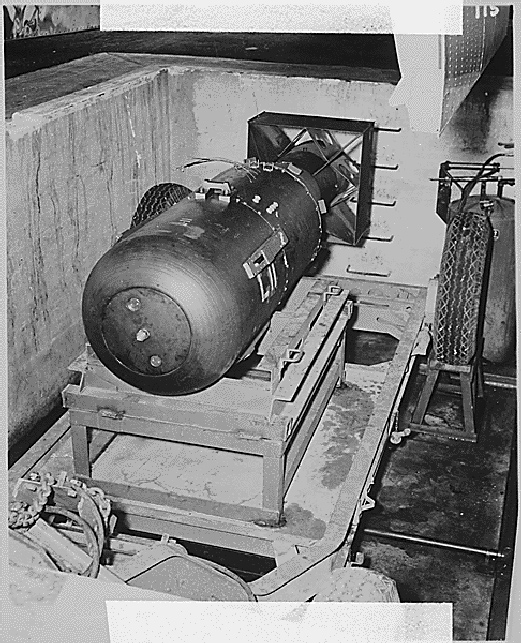Probably The Rarest & Most Significant Artifact of WW2 Available in the World. A Superb 'Top Secret' 'Ball Race', A Spare Part of the World Famous 'Little Boy' Bomb , The Very First Atom Bomb Ever Made, and Used in WW2 To End The War in Japan
An amazing significant piece especially for this August, for the 80 year anniversary of the Victory Over Japan in August 1945.
This amazing piece of history has returned from use in a documentary on the Manhattan Project and Professor Oppenheimer, as can be seen in the current worldwide movie hit, 'Oppenheimer'
It is the second, 'back-up' spare part that we owned, the first spare part we sold previously to a private museum in Florida, and both were made for the world famous Manhatten Project at Los Alamos the create the 'Little Boy' bomb, the 1st ever Uranium Bomb, that ultimately led to the end of WW2 in Japan. Although obviously devastating to Japan, it saved many, many millions of lives, including the hundreds of thousands of allied WW2 POWs in Japanese slave and torture camps, who were to be instantly executed, under Imperial decree, the moment an allied soldier stepped foot on Japanese soil.
And, not forgetting the Japanese Imperial General Staff order that every man, woman, and child in Japan were instructed to kill an allied invading soldier, by whatever means, and every Japanese citizen was ordered to fight to the death, and never surrender.
Another most interesting and historical fact, not often known by most today, was that the emperor realised once the atom bombs were dropped, and their god like devastating power revealed, Japan was utterly lost, and what remained of his empire and his people must be saved at all costs, despite the likelyhood of an assassination attempt to kill their divine Emperor
Thus he decided to announce Japan's unconditional surrender, and thus the assassination conspiracy was enabled. Considerable elements of the general staff had other ideas to the Emperor's surrender order, and many passionately opposed this decision, so much so, despite him being regarded as a god, an assasination squad under command of Major Hatanaki, a fiery eyed zealot, was despatched to the imperial palace to kill thir emperor.
Fortunately for the world his most faithful and devoted aide hid him in a special protected room, and thus the emperor was able to escape and make his momentous surrender broadcast, and the rest, as they say, is history.
In the days that followed the emperor’s radio address, at least eight generals killed themselves. On one afternoon, Vice Admiral Matome Ugaki, commander of the Fifth Air Fleet on the island of Kyushu, drank a farewell cup of sake with his staff and drove to an airfield where 11 D4Y Suisei dive-bombers were lined up, engines roaring. Before him stood 22 young men, each wearing a white headband emblazoned with a red rising sun.
Ugaki climbed onto a platform and, gazing down on them, asked, “Will all of you go with me?”
“Yes, sir!” they all shouted, raising their right hands in the air.
“Many thanks to all of you,” he said. He climbed down from the stand, got into his plane, and took off. The other planes followed him into the sky.
Aloft, he sent back a message: “I am going to proceed to Okinawa, where our men lost their lives like cherry blossoms, and ram into the arrogant American ships, displaying the real spirit of a Japanese warrior.”
Ugaki’s kamikazes flew off toward the expected location of the American fleet. Fortunately they were never heard from again.
Although just 80 years old this year, it is probably one of the rarest items we are ever likely to offer, or will ever be seen again on the world market to buy.
A unique survivor of the most expensive and intense top secret project of WW2. A superb, micro engineered gyro ball race.
We had both spare part Gyro Ball Races, and the other one previously, that we had, we sold to an American private museum collector. This is the secondary spare part, that we acquired from the late collection of Professor Samuel Eilenberg, Emeritus Professor of Mathematics at Columbia University in WW2, that we are delighted to offer for sale. The first, 'principle' part, was used during the construction of 'Little Boy' Uranium Bomb, part of the ultra top secret 'Manhattan Project' and evaporated in the detonation. However, there were two spare parts made at Los Alamos, and we were delighted and most privileged to have acquired both of them. The 1st 'spare' part, we sold earlier, was engraved, this second back-up spare part, was not with it's Los Alamos part code; GYRO PT MK3 A. Code L.B.BOMB. That first spare part we sold recently to a private museum in Florida, USA, this, our second example another MK3 A, is plain and un-engraved, and the 'back-up' spare part.
Apparently most component parts of both bombs made at Los Alamos code names; 'Little Boy' and 'Fat Man' had spare parts, and 'back-up' spare parts, constructed. Importantly, if a main part was damaged in assembly they could not wait the many months it would take for a spare to be made, potentially at a cost of hundreds of thousands of dollars, thus prudently, emergency spares, and secondary spares, were required. Souvenirs of the Manhattan Project were later officially gifted or presented to many of the consultants and scientists working on, or associated with, the greatest secret project of the 20th century, once the project was officially closed down by the lead physicist Dr. Oppenheimer. For information purposes the diameter of the ball race is 160mm which is within a small tolerance of the diameter of the gun barrel 165mm that barrel was central to the construction of 'Little Boy'. This measurement may indeed be a clue to the relevance to the ball races actual function or use within the project. Unfortunately due to the top secret nature of the whole event Prof Eilenberg did not reveal the ball races specific function, or, even his, no doubt significant, personal contribution, within the project, before his death in January 1998, only that he acquired them at Los Alamos in August 1945, apparently personally given by Oppenheimer. Much of the full schematics are still officially 'Top Secret'.
The first spare that we sold was accompanied by top secret Royal Naval photos, and the id plate of the projector used to show the professors, physicists and scientists working on the project, the film of the dropping of 'Little Boy' by the Enola Gay. We show for information only those photos and id plate, but they are not included with this back-up spare part. We also show the engraving, as was on the original spare part we sold, but it is not on this 'back-up' spare. The Manhattan Project was the project to develop the first nuclear weapon (atomic bomb) during World War II by the United States, the United Kingdom, and Canada. Formally designated as the Manhattan Engineer District (MED), it refers specifically to the period of the project from 1941–1946 under the control of the U.S. Army Corps of Engineers, under the administration of General Leslie R. Groves. The scientific research was directed by American physicist J. Robert Oppenheimer.
The project succeeded in developing and detonating three nuclear weapons in 1945: a test detonation of a plutonium implosion bomb on July 16 (the Trinity test) near Alamogordo, New Mexico; an enriched uranium bomb code-named "Little Boy" on August 6 over Hiroshima, Japan; and a second plutonium bomb, code-named "Fat Man" on August 9 over Nagasaki, Japan.
The project's roots lay in scientists' fears since the 1930s that Nazi Germany was also investigating nuclear weapons of its own. Born out of a small research program in 1939, the Manhattan Project eventually employed more than 130,000 people and cost nearly $2 billion USD ($23 billion in 2007 dollars based on CPI). It resulted in the creation of multiple production and research sites that operated in secret.
The three primary research and production sites of the project were the plutonium-production facility at what is now the Hanford Site, the uranium-enrichment facilities at Oak Ridge, Tennessee, and the weapons research and design laboratory, now known as Los Alamos National Laboratory. Project research took place at over thirty different sites across the United States, Canada, and the United Kingdom. The MED maintained control over U.S. weapons production until the formation of the Atomic Energy Commission in January 1947. We also have an original photo print taken from HMS Colossus, part of 11th Aircraft Carrier Squadron, that was based in the Pacific, commanded by Rear Admiral Harcourt. It was taken on 7th August 1945 the day after Little Boy was detonated. It is a picture of two I/d profiles of two Japanese T/E fighters that were originally observed in July 1945. These photographs were sent to the Manhattan Project HQ, but why, to us, this remains a mystery. Also, another souvenir, the serial tag from the Army Air Corps Bell and Howell sound projector, that apparently showed the original film of the detonation of 'Little Boy' to Professor Eilenberg and others from the project after the Enola Gay mission. Those souvenirs we had accompanied the sale of the first and engraved spare ball race, and not this one. We show in the gallery, for information only, a Paul R. Halmos's photograph of Samuel Eilenberg (1913-1998, shielding his face left, and Gordon T. Whyburn (1904-1969) in 1958 at the International Congress of Mathematicians in Edinburgh. For example, in relation to the desirability of original items connected to this monumentally historical mission, two other souvenirs from Little Boy, the green safety plugs, were sold around 23 years ago in the US.
The Little Boy was armed on the mission flight by removing the green safety plugs, and arming it with red arming plugs. This was undertaken by 23 year old Lt. Morris Richard Jeppson, who armed the bomb during the flight. For this perilous task he was awarded the Silver Star for his unique contribution to the mission. Jeppson, however, kept a few of the green plugs that signified his role in the bombing as souvenirs. He sold two of them in San Francisco for $167,500, at auction, in 2002, however, the US federal government claimed they were classified material and tried, but failed dismally, to block the sale in the courts, however the presiding Judge ruled that all of the Little Boy artefacts, details etc., are effectively, now, in the public domain and free to be sold at will.
We were very fortunate to acquire these fascinating pieces, from Prof Eilenberg's collection, from a doctor and lecturer of oriental studies in London, who acquired them himself some years ago from a dear colleague of Prof Eilenberg. This rare piece, the back-up gyro ball race spare part, is plain does not bear engraving, but it does have Eilenberg's label from his personal collection. It does not come with the camera plate or official photos they went to the museum in Florida, but we can supply copy photo images of the originals.
Plus, every single item from The Lanes Armoury is accompanied by our unique Certificate of Authenticity. Part of our continued dedication to maintain the standards forged by us over the past 100 years of our family’s trading
Code: 22797
19000.00 GBP

